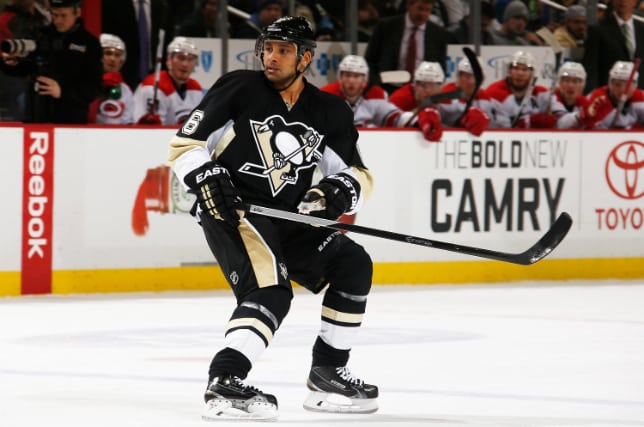
It took until December for the first notable trade of 2015-16 to happen, and there has only been four trades since the season began. With a number of big names potentially on the market, what’s causing the lack of trade action in the league?
 Rumor Roundup: Trade market hurting due to cap, Canadian dollar
Rumor Roundup: Trade market hurting due to cap, Canadian dollarIn mid-December, Sportsnet's Luke Fox posted a list of the one player hardest to trade for each NHL team. The running theme was all were either aging or injury-prone veterans carrying expensive contracts, many with no-trade clauses.
The notables included Boston Bruins defenseman Zdeno Chara, Detroit Red Wings goalie Jimmy Howard, Los Angeles Kings left wing Dustin Brown, Nashville Predators blueliner Shea Weber, Philadelphia Flyers center Vincent Lecavalier, San Jose Sharks center Joe Thornton and Toronto Maple Leafs captain Dion Phaneuf.
Prior to the implementation of the salary cap a decade ago, GMs were willing to take a chance on expensive stars whose best years are behind them or those with a lengthy injury history. Not so in today's cap world. GMs are less willing to gamble, especially on players with term remaining on their contracts.
In recent years, that's led to a sharp decrease in the number of early-season trades. Prior to the recent holiday roster freeze, the only notable deal this season saw the Chicago Blackhawks ship defenseman Trevor Daley to the Pittsburgh Penguins for blueliner Rob Scuderi.
Following the holiday freeze, the Montreal Canadiens dealt winger Zack Kassian to the Edmonton Oilers for goaltender Ben Scrivens. It was essentially two struggling teams swapping a couple of players with no future in their respective organizations. Scrivens becomes the Habs No. 3 goalie while Kassian heads to the Oilers' AHL farm team.
In the past, the Kassian-for-Scrivens trade would barely register as news. Given the lack of activity in this season's trade market, it received headline treatment.
Fox's colleague Damien Cox wonders if that move could “break the logjam” in the trade market, opening the floodgates for more deals soon. Most likely, however, the market will remain stagnant for several weeks
The salary cap remains the biggest sticking point. As per General Fanager, 19 NHL teams have less than $6 million in salary-cap room for this season. Of those clubs, 13 have less than $2 million. For those teams to swing significant deals, they must shed salary or make dollar-for-dollar swaps.
Of the clubs with more than $5 million in cap room, most are rebuilding teams under self-imposed cap ceilings much lower than the league's $71.4 million. They seek promising, affordable young talent and aren't keen to saddle themselves with aging veterans carrying big contracts.
Concern over the declining value of the Canadian dollar is also an issue. With seven Canadian teams accounting for over one-third of the league's revenue, it has an effect upon the salary cap. Indeed, over the past two years, salary-cap projections have fallen short.
With the Canadian dollar currently hovering around .72 cents US, the league's recent prediction of a $3-million increase for 2016-17 over the current cap ceiling was greeted with skepticism. It's made GMs reluctant to make in-season trades involving high-salaried players under contract beyond 2015-16.
League parity is another significant factor affecting the trade market. At this point in the season, there's very few clubs considered to be sellers.
The Columbus Blue Jackets are the only team right now with little chance of reaching the playoffs. Most of the other non-playoff clubs are only a handful of points from a wild-card berth. As long as their respective managements believe they still have a shot, they're in no hurry to dump assets in the trade market.
No-trade clauses have also hampered trade activity. While there are instances where players carrying such clauses waived them to facilitate a trade, having one still makes a player difficult to move. It gives them final say over their preferred destinations, which in turn limits a GM's trade options.
With the trade deadline is Feb. 29, trade activity should start picking up in January. Still, we could be waiting until February for the significant moves to take place.
Rumor Roundup appears regularly only on thehockeynews.com. Lyle Richardson has been an NHL commentator since 1998 on his website, spectorshockey.net, and is a contributing writer for Eishockey News and The Guardian (P.E.I.).
For more great profiles, news and views from the world of hockey, subscribe to The Hockey News magazine.







